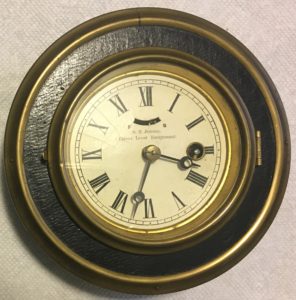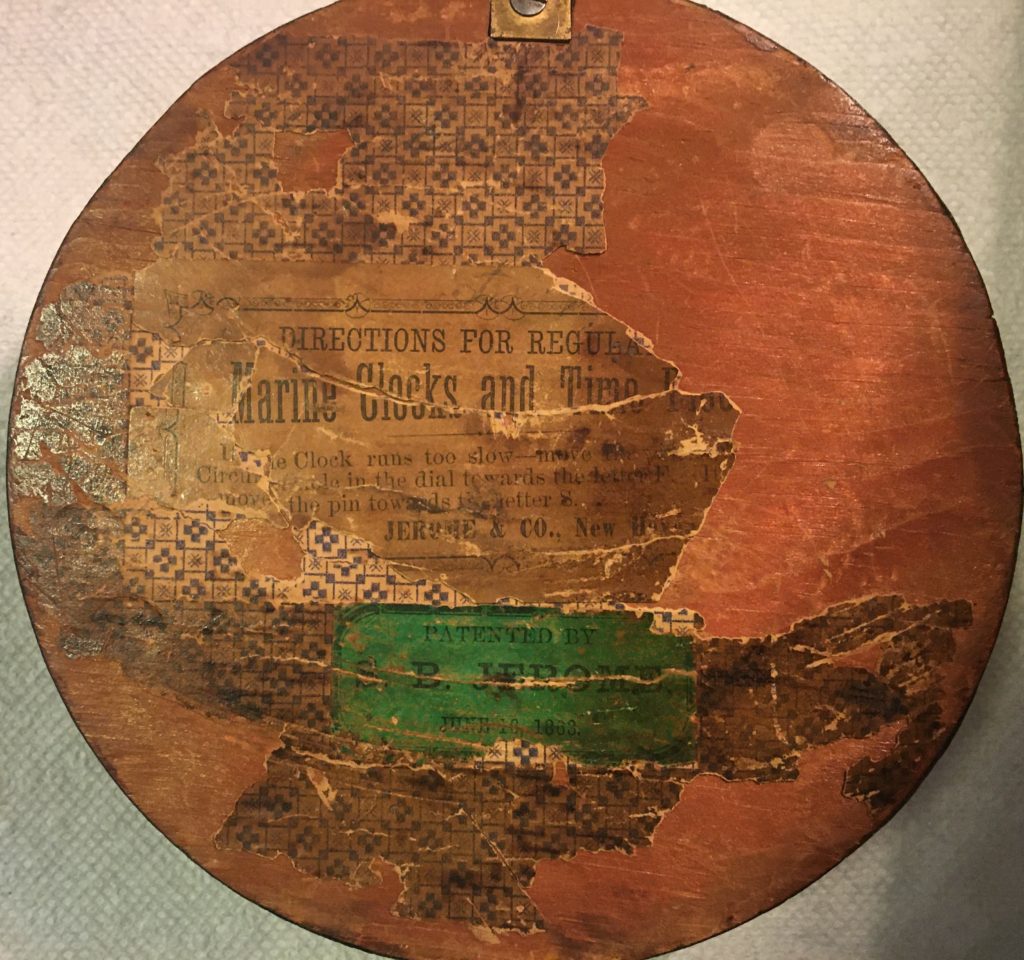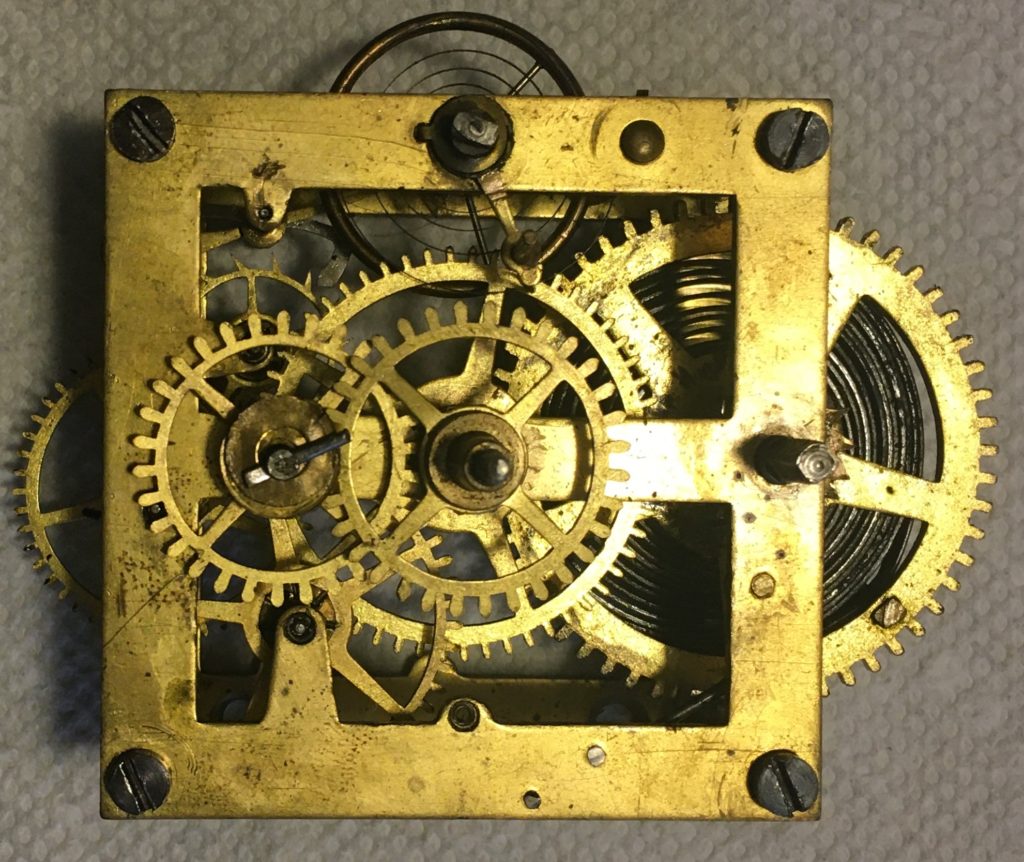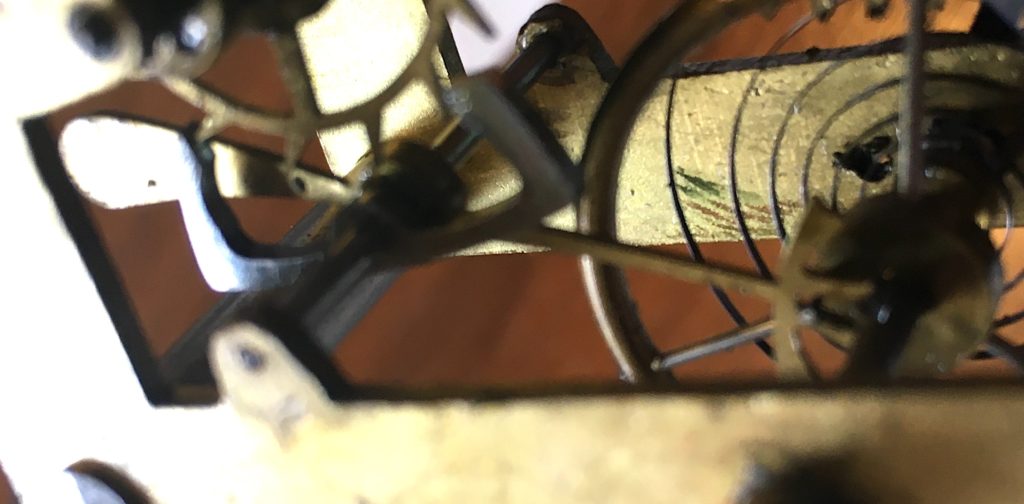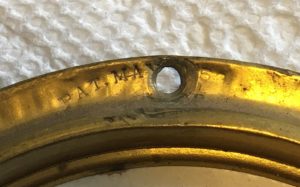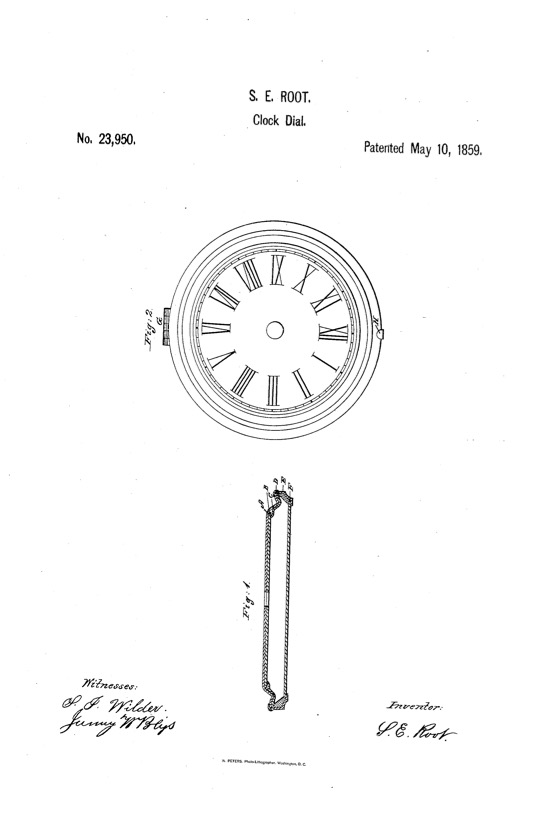It was a pleasant surprise when this 30-hour marine lever timepiece made by Jerome & Co. (S.B. Jerome) fell into my lap. The timepiece features two patents, one for the case by S.B. Jerome and the other for the dial by S.E. Root. Root’s patent (#23,950) dates to May 10, 1859. The patent was reissued on August 3, 1875, with patent number 6,580. The Jerome patent (#1,763) dates to June 16, 1863. The timepiece would likely be considered a miniature, with a dial diameter of only 3.5”.
The back of the case has several characteristics of Jerome & Co. clocks with an association to S.B. Jerome: the use of a “wallpaper”-type backing; the Jerome & Co. label; and a green label noting Jerome’s 1863 patent.
Front view of the unmarked Hubbell marine lever movement.
Rear view of the movement.
Out-of-focus view showing the verge/lever assembly. The shape of the tines in the verge/lever assembly is believed by Richard Hubble to be pre-1865 (NAWCC Bull. No. 406, pg 586). That particular movement, in an S.B. Jerome case with the 1863 patent (like mine), was an unmarked umbrella movement patented by Hubbell in 1865. Hubble speculates that this umbrella movement predates the 1865 patent, because it is unmarked. Mine is not the umbrella movement, and I have not been able to find my movement in the literature. It is very similar to a Hubbell-stamped miniature movement found in a Waterbury octagon-cased timepiece with a 3.5” inch dial (NAWCC Bull. No. 379, Figures 2 and 33). While the gear layouts appear to be identical in these two movements, the cutouts in the front plate are slightly different. Also, the movement in the Waterbury timepiece has pinned plates, whereas mine is held together with machine screws. This latter feature I consider to be “later” (without being able to say how much later). For what it’s worth, the umbrella movement mentioned above and believed to be pre-1865 has pinned plates. Hubble shows another umbrella movement, also with pinned plates, that has the October 1865 patent stamp and what he believes is a later style tine construction than the version in my movement. Also patented in 1865, Hubbell’s Christmas tree movement shows up with plates held together with machine screws. All of which makes the dating of my movement as clear as mud.
A close-up of the rim of the dial pan showing the patent date stamp.
Drawings for S.B. Jerome’s Design patent #1,763.
Drawings for S.E. Root’s patent #6,580.
